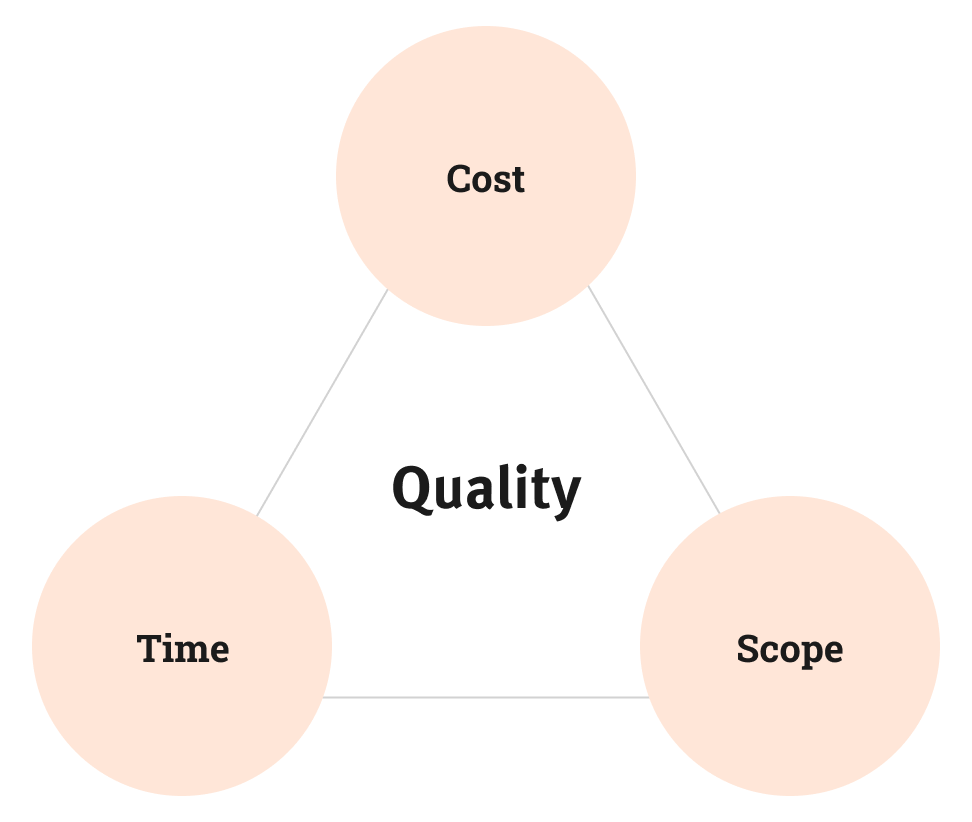Project Brief - the First Step to a Successful Digital Product


You have a marvelous idea for a new app to elicit new revenues for your company. The purpose is clear; however, the exact scope is yet to be defined. How will you explain your intentions to external partners in product development?
At Creatim, we are occasionally confronted with a one-page inquiry asking, “How much do you charge for a webshop?” which is like asking an architect how much a house costs. A holiday home or a villa? While most inquiries contain a basic description, they typically lack the depth needed for a thorough evaluation.
If you want comparable offers, you must articulate your intentions, wishes, and objectives as clearly as possible. First, ensure these concepts are well-defined and understood internally within your organization. Too often, project stakeholders can have differing interpretations of desired outcomes.
It is worth referring to the OKR (Objectives and Key Results) methodology to answer two key questions:
Focusing on user goals and desired business outcomes is the best approach to tackle a digital product when the exact architecture and features are yet to be determined.
Imagine you want to improve your organization's workplace atmosphere because employees complain about being poorly informed while rumors and uncertainty are in the air. A revamped intranet could remedy the situation by providing better information flows and fostering two-way communication between employees and management.
Objective: Implement a new intranet to promote transparency and expedite information dissemination. The goal is to foster an inclusive atmosphere that motivates employee engagement and boosts overall job satisfaction.
Key Results:
Once the key stakeholders share a common expectation of project outcomes, it is time to introduce the project to external contractors. The future development team, internal and external, should strive for the same goal.
When the scope of a solution is well-defined, the level of uncertainty is low. Conversely, if the objectives are clear but the scope is not, the level of uncertainty is high.
Usually, the degree of uncertainty lies in between. We know something, but not everything. The project brief should reflect this level of uncertainty.
Fraport Slovenia, the company that manages the Ljubljana Airport, had many specific requirements for its new intranet. The focus was on the ground staff, who needed real-time access to intricate details of flight schedules, including take-offs, landings, and plane movements. There are no off-the-shelf intranet solutions for such a case. Based on an in-depth analysis of the company's needs and the expectations of its employees, we tailored the solution to meet the client's specific requirements. Read more
Fraport Slovenia's intranet is an example of a solution with high uncertainty. Initially, we didn't know how complex and extensive the final solution would need to be.
In contrast, there are projects with low uncertainty, such as template-based WordPress web pages or simple webshops built on SaaS platforms such as Shopify or BigCommerce. The target audience is known, as are the shortcomings of the existing solution and the improvements required. Thus, there is no need to reinvent the wheel here. The final product is definable, and the exploration phase boils down to a few upgrades and a refreshed user interface design.
How soon you will get to a realistic estimate largely depends on the level of uncertainty. For simple, identifiable projects, the picture is clear. Any seasoned bidder will be able to estimate the cost. For projects with a high degree of indeterminacy, there are two possibilities:
The problem with complex solutions is that they are chronically prone to change. In Creatim's 20+ year history, we have never encountered a change-free project, as unexpected market developments, new product launches, competitor campaigns, changes in the technical environment, and more are inevitable and require an appropriate response. Therefore, each project is a permanent quest for a balance between price, scope, and lead time. If you change one item, you must adjust the other two to ensure the solution's quality.

As already discussed, expecting a fixed-price response to your inquiry is unrealistic, so be cautious if a development agency provides a fixed (and suspiciously low) price. If it is too good to be true, it probably is.
Instead, consider the project brief a starting point for further discussions. The more information the contractor receives, the more concrete and solution-oriented further discussions will be, and the quicker you will arrive at a realistic price for the project. So, don't skimp on the information. At the very least, you should include the following:
| Business context | What made you decide to take on the project? What is the company's vision, and how should the coming digital product contribute to this vision? |
| Project Objectives and Key Results (OKRs) | What added value does the digital product bring to your company and its users? |
| Budget | If you have already planned resources for the project, indicate them in the brief to give the contractor an idea of the project size. In this case, you don't measure the bids by price but by what you get for your money. |
| Your expectations | What do you expect from the contractor? What are the project's priorities? Indicate the fixed stipulations and where you are open to suggestions. Are we talking about the project design, the implementation of a specific phase (e.g., UX design), technical development, or the whole project? The contractor should explain their approach to development. What do you expect from the contractor after the solution is published? |
| Comparable competing solutions | You know your main competitors and what their strengths are. What do you like and dislike about their solutions? |
| Target groups and main user requirements | Who are the users? What challenges do they face? How should the new solution help them? |
| Technical requirements and known constraints | You may already use specific systems you do not want to give up. These may include a payment service, loyalty program, or communication apps. Are there technical conditions that the provider is obliged to comply with? Are there any legal or regulatory constraints on the new solution? |
| Roadmap with major milestones | When do you want the project to start? Are there key milestones related to funding or a specific event to which the project is linked? |
| Existing documentation, research, and links to existing products | You may have already defined the project design and even have a specification. Attach graphic design elements, links to any existing applications, analytical data, and other information the contractor must consider in preparing the tender. |
A project brief is a concise presentation of a project to stakeholders inside and outside the company. It is particularly indispensable for tenders when you want to get bids for developing your web portal, app, or online shop. It is useful throughout the project's lifetime, as it unifies the perceptions of the project stakeholders and helps the development team maintain focus when faced with challenges, changes of scope, and new team members.
If you need help with outlining your project, please contact us. We are happy to help you at any stage of the product design and development.